When your email campaigns rely on accurate data transfers, mapping errors can cause major issues - like flawed personalization, compliance risks, and poor deliverability. To avoid these problems, data mapping error detection tools are essential. They help identify mismatches, validate field mappings, and maintain data integrity in real time.
Key Takeaways:
- Why it matters: Mapping errors disrupt campaigns, harm sender reputation, and risk compliance violations (e.g., CAN-SPAM Act).
- What to look for: Automation, real-time monitoring, seamless integrations, and compliance support.
- Top tools in 2025: Hevo Data, Astera, Informatica PowerCenter, Altova MapForce, and Monte Carlo Data.
Quick Comparison:
| Tool | Starting Price | Key Features | Best For |
|---|---|---|---|
| Hevo Data | $239/month | Real-time mapping, 150+ connectors | Small-medium businesses |
| Astera | Custom pricing | High-volume reconciliation, enterprise focus | Large-scale operations |
| Informatica | High cost | Advanced compliance, flexible customization | Enterprises with strict regulations |
| Altova MapForce | Custom pricing | Visual interface, interactive debugger | Businesses needing intuitive workflows |
| Monte Carlo Data | Custom pricing | Machine learning, data lineage tracking | Complex, proactive error detection |
Choose the tool that matches your business size, data volume, and compliance needs to avoid costly errors and keep your email marketing running smoothly.
Debugging Mapping Errors in Data Integration
How to Choose Data Mapping Error Detection Tools
Picking the right data mapping error detection tool is a critical decision for your email marketing operations. With so many options out there, it’s important to zero in on the features that align with your business needs. Doing so will save you from unnecessary headaches, wasted time, and costly errors.
Automation and Scalability
Manually validating thousands of records every day isn’t just tedious - it’s nearly impossible. That’s why the best tools rely on AI to spot anomalies, validate field mappings, and flag issues before they can disrupt your campaigns.
When evaluating tools, think about your current data volume and how it might grow. A startup managing 10,000 contacts has entirely different requirements than a large enterprise juggling millions of records across multiple databases. Tools with cloud-based architecture are often a better fit for scaling, as they can allocate additional resources automatically during peak times.
For businesses running time-sensitive campaigns, real-time monitoring is a must. Tools that only perform batch processing once a day may leave you blind to critical errors that could derail campaigns scheduled to launch within hours. The most effective tools offer continuous monitoring and send instant alerts whenever mapping discrepancies pop up.
Additionally, look for tools that allow you to create custom automation rules. Every business has unique data structures and validation needs. Having the flexibility to tailor workflows to your specific mapping logic can save time and prevent errors that could hurt your campaign targeting.
Once scalability is addressed, you'll also want a tool that integrates seamlessly with your existing email marketing systems.
Integration with Email Marketing Platforms
Integration should be smooth and hassle-free. Tools that require extensive custom development or complicated API configurations are more trouble than they’re worth.
Seek out solutions with pre-built connectors for leading US email marketing platforms like Mailchimp, Constant Contact, and HubSpot. These connectors should support bidirectional data flow, enabling you to both detect errors and push corrections back to your source systems.
Database compatibility is another key factor. Whether your organization relies on cloud-based systems, on-premises databases, or a hybrid setup, the tool must work seamlessly across all platforms to ensure data accuracy.
The implementation process itself should be quick and straightforward. Tools that take weeks to set up or require heavy IT involvement might not be practical for smaller teams. Instead, opt for solutions with plug-and-play setup and guided configuration wizards, so you can get up and running in just a few days.
Data Quality and Compliance Features
Beyond automation and integration, maintaining high data quality and meeting compliance standards are essential for long-term success.
Data quality monitoring should go beyond basic field matching. The right tool will ensure data is in the correct format, complete, and free of duplicates. It should also validate email addresses to keep your campaigns efficient and effective.
For US-based businesses, CAN-SPAM compliance is non-negotiable. Your tool should help monitor opt-out preferences, validate sender details, and ensure unsubscribe requests are accurately synced across all systems. Advanced tools may even include audit trails to document data handling processes - useful for compliance reviews.
How quickly you can fix errors matters, too. Tools with robust error reconciliation capabilities can identify mapping problems, suggest corrections, or even resolve common issues automatically. Features like bulk updates for incorrect mappings can save you hours of manual effort.
As your organization grows, strong data governance becomes increasingly important. Look for tools that offer role-based access controls, approval workflows for data changes, and detailed logging to maintain data integrity. These features ensure only authorized personnel can make changes to critical mappings.
Lastly, consider tools with data lineage tracking. This feature provides a clear view of how data flows through your systems, helping you pinpoint the source of errors and prevent them from recurring. When issues arise, having this level of transparency makes troubleshooting faster and more effective.
Best Tools for Data Mapping Error Detection in 2025
Finding the right tool can make all the difference in running smooth email marketing campaigns while avoiding costly errors. Below, we’ve highlighted some of the top platforms specifically designed to detect and resolve data mapping issues. These tools combine automation, integration, and compliance features to help maintain data accuracy and integrity in your email marketing efforts.
Hevo Data
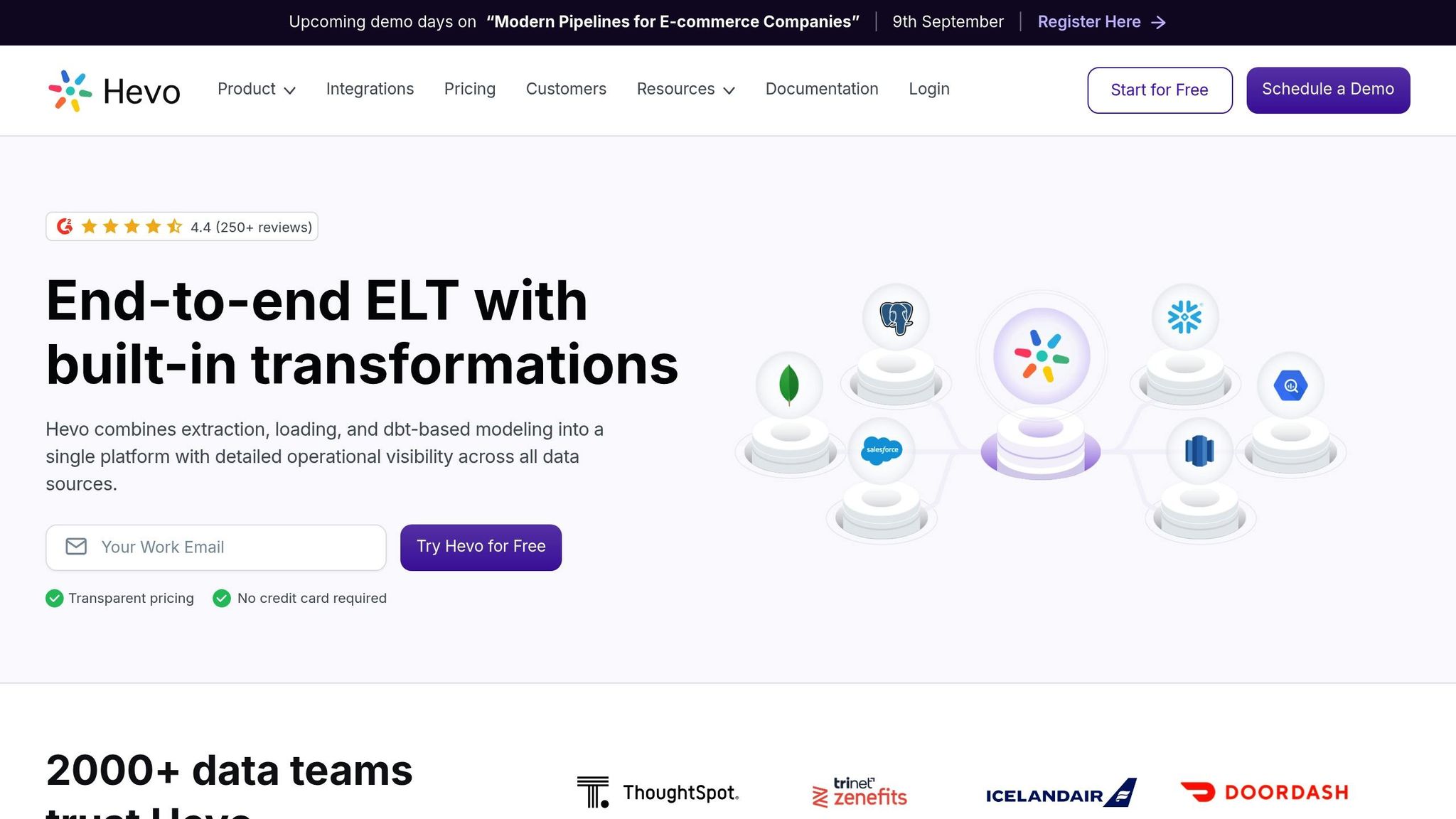
When it comes to email campaigns, precise data mapping is non-negotiable, and Hevo Data excels in this area. It offers automated schema mapping, which simplifies integration by automatically creating and managing mappings. Any incompatible incoming events are flagged as failed records, saving you from manually sifting through data. Its real-time data transformation engine - accessible through an intuitive drag-and-drop interface or Python console - lets you modify and enrich data on the spot, catching errors early. The incremental data load feature ensures only modified data gets updated, reducing bandwidth usage and minimizing the risk of introducing new errors. With over 150 connectors, Hevo Data integrates effortlessly with a wide range of email marketing platforms.
Astera
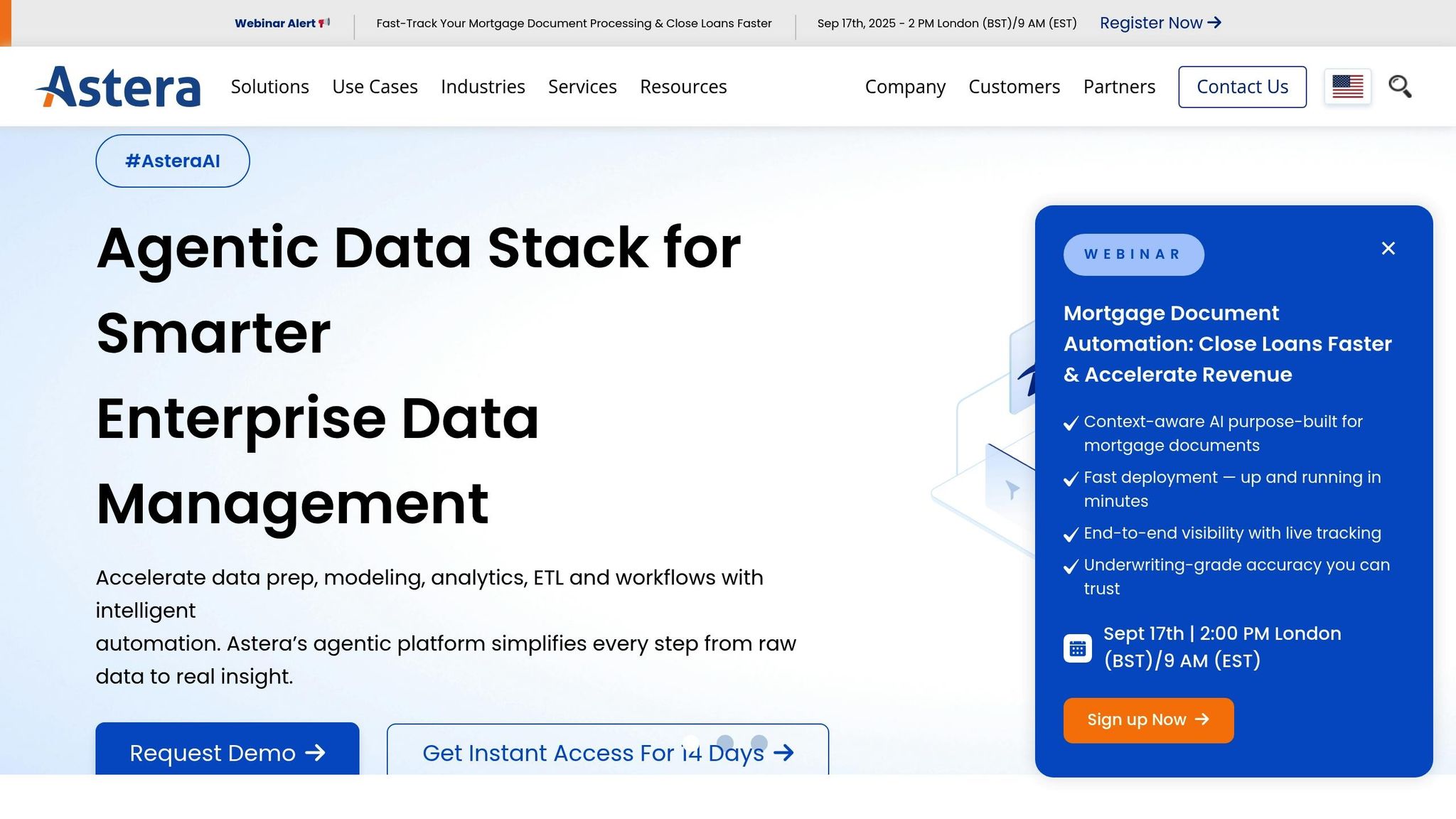
Astera is built for enterprise-level operations, offering automated data reconciliation for high-volume tasks. Its ability to handle complex data transformations makes it a reliable choice for large-scale campaigns that demand robust data integrity.
Informatica PowerCenter
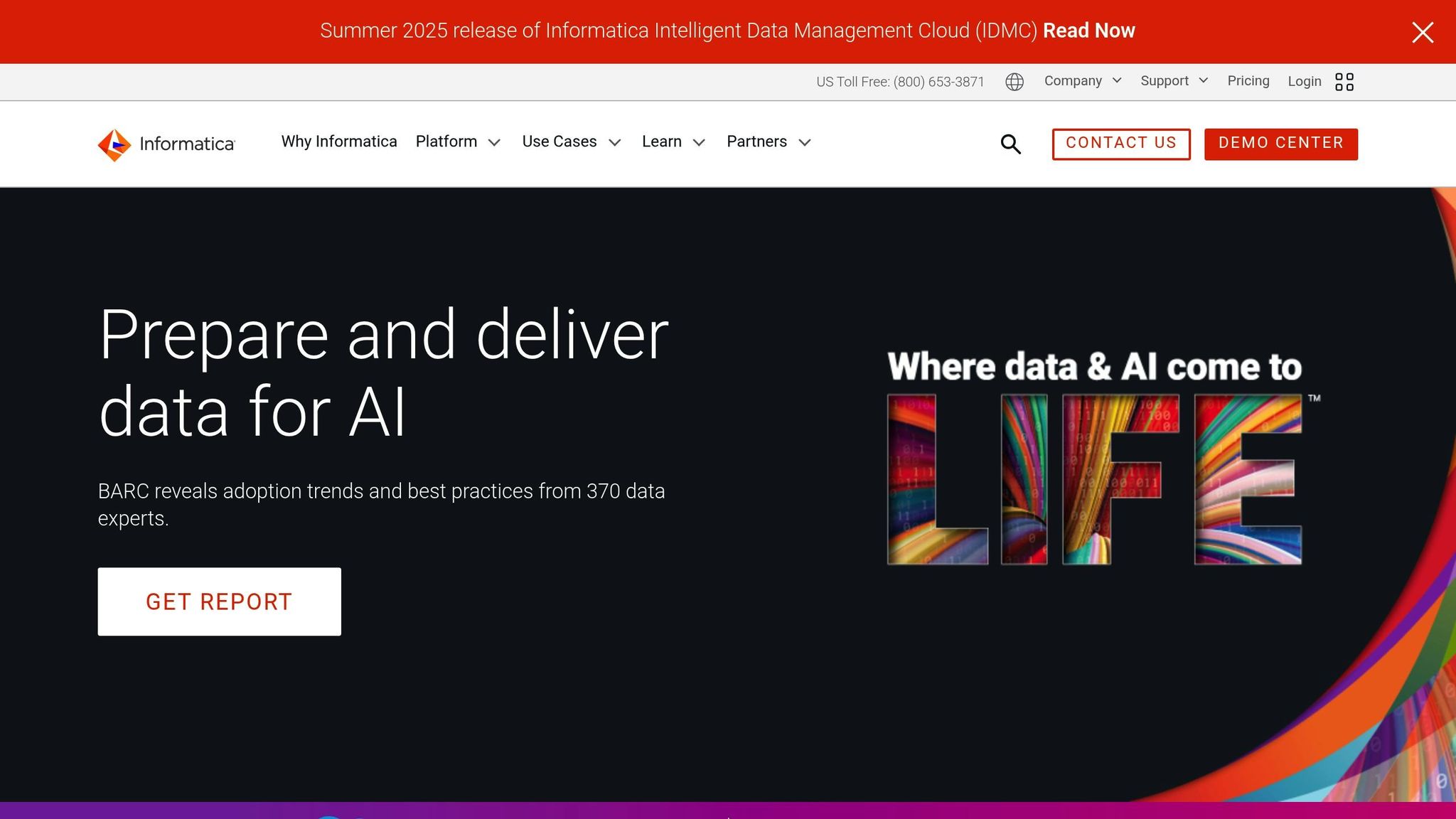
Informatica PowerCenter is another enterprise-grade solution that shines in monitoring and resolving mapping issues. It supports custom Java and JavaScript code for advanced troubleshooting and uses a centralized data repository to streamline error detection. Additionally, it ensures compliance with certifications like SOC, HIPAA, and Privacy Shield, safeguarding sensitive email marketing data.
Altova MapForce
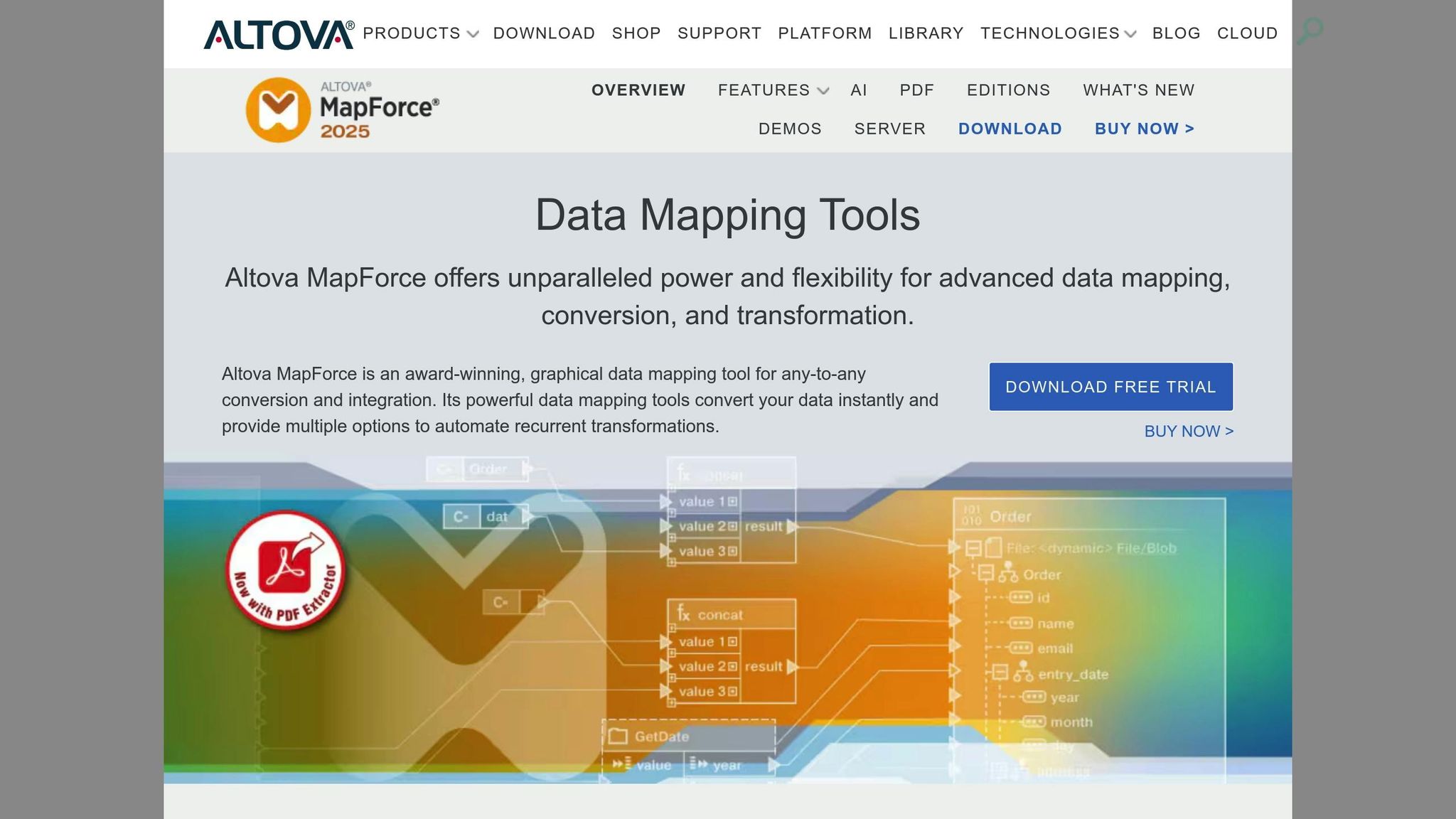
Altova MapForce stands out with its visual interface, which simplifies the process of defining and inspecting data flows. Logical mapping errors are easier to catch, thanks to its interactive debugger, which includes breakpoints and data inspection tools. Validation options range from field-level checks to message- and character-level inspections, offering comprehensive error detection. The platform also supports transaction rollback and specialized error handling for HTTP APIs, ensuring data consistency even when mapping errors occur.
Monte Carlo Data
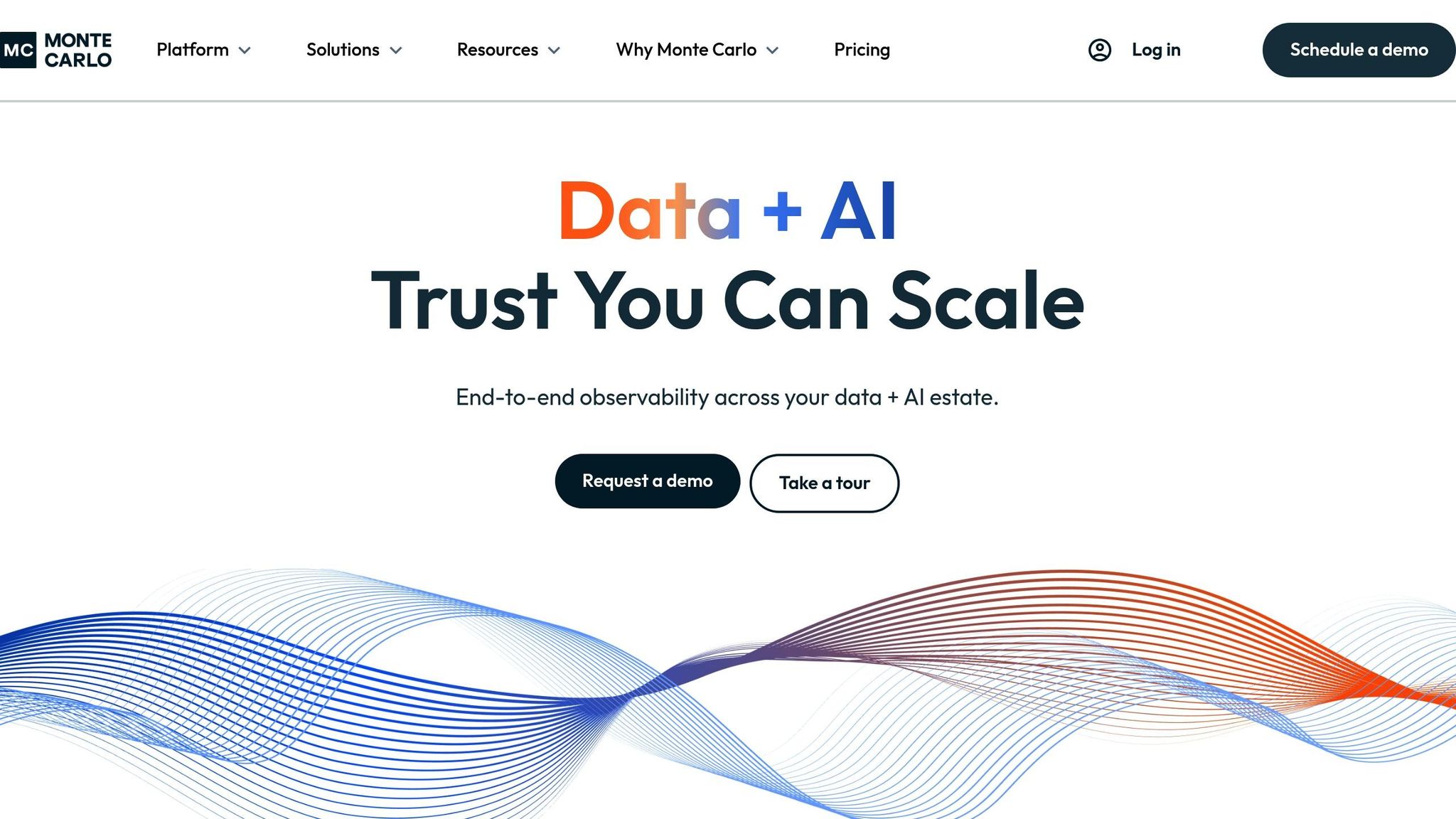
Monte Carlo Data takes a proactive approach to data mapping error detection. Its machine learning algorithms analyze typical data patterns to flag anomalies - like sudden changes in subscriber behavior or engagement metrics - that could indicate mapping issues. With detailed data lineage tracking, you can trace errors back to their source, while automated incident detection speeds up resolution time. These features ensure your email campaigns stay on track without disruptions.
For more tips on maintaining data integrity in email marketing, visit the Email Service Business Directory (https://emailservicebusiness.com).
sbb-itb-6e7333f
Tool Comparison for Data Mapping Error Detection
Feature and Pricing Comparison
Selecting the right tool for detecting data mapping errors depends on matching its features and pricing to your business needs. Below is a breakdown of key features, pricing structures, and capabilities tailored for U.S. email marketers.
| Tool | Starting Price (USD) | Key Automation Features | Email Platform Integration | Compliance Support | Best For |
|---|---|---|---|---|---|
| Hevo Data | Free (up to 1M events); $239/month (Starter) | Automated data mapping, real-time data processing, incremental loads | Multiple connectors with major email platforms | GDPR compliance | Small to medium businesses needing scalable automation |
| Astera | Custom pricing | Automation with scalable integrations | Deeper integrations with major platforms | Strong compliance support | Large-scale operations with complex workflows |
| Informatica PowerCenter | High initial licensing costs | Flexible customization and integration | Extensive enterprise-level integrations | Advanced compliance support | Enterprises with strict regulatory requirements |
| Altova MapForce | Custom pricing | Visual mapping interface for ease of use | API-based integrations | Standard data protection | Businesses focused on intuitive workflow design |
| Monte Carlo Data | Custom pricing | Machine learning for anomaly detection and automated alerts | Cloud-native integrations | Data governance and lineage tracking | Companies aiming to prevent errors proactively |
These tools vary widely in pricing and capabilities, making it essential to weigh your priorities carefully.
For email marketers, both pricing and automation play a major role in ensuring reliable campaigns. Hevo Data offers transparent, event-based pricing: free for up to 1 million events, $239/month for up to 5 million events, and $679/month for up to 20 million events. On the other hand, Informatica PowerCenter comes with steep initial licensing fees and significant ongoing costs.
When it comes to automation, Hevo Data simplifies workflows with automated data mapping, while Monte Carlo Data uses machine learning to spot anomalies in real time. In contrast, Informatica PowerCenter offers flexibility but requires technical expertise to fully utilize its features.
Integration depth is another critical factor. Hevo Data provides a wide range of connectors for email platforms, but enterprise solutions like Astera and Informatica PowerCenter offer more customized and robust integrations, making them ideal for larger, more complex setups.
Compliance is non-negotiable for U.S. email marketers. Informatica PowerCenter stands out with its advanced compliance features, catering to industries with strict regulations. Other tools, like Hevo Data, typically stick to standard GDPR compliance.
For businesses handling large-scale data, tools like Astera and Informatica PowerCenter excel in managing high volumes, while Monte Carlo Data's machine learning capabilities make it a strong choice as data complexity grows.
Real-time processing has become increasingly important for businesses. Hevo Data supports real-time data handling, and Monte Carlo Data's instant alerts help identify and address issues without delay.
Finally, ease of use and total cost of ownership are key considerations. Tools like Altova MapForce, with its user-friendly visual interface, minimize the learning curve, while more complex platforms like Informatica PowerCenter demand specialized skills. Beyond licensing fees, remember to factor in costs for implementation, training, and ongoing maintenance when planning your email marketing campaigns.
How to Implement Data Mapping Error Detection
Detecting errors in data mapping requires a thoughtful approach that combines structured processes, automation, and the right tools tailored to your operational and compliance needs. For businesses in the U.S., ensuring alignment with regulatory standards is equally essential.
Regular Audits and Reconciliation
Consistent audits are the cornerstone of effective error detection. Perform weekly checks on high-volume data flows and conduct thorough monthly reviews to catch discrepancies before they disrupt campaigns or customer interactions.
Focus on high-risk areas like segmentation fields, personalization tokens, and behavioral triggers. Use a detailed checklist to confirm accurate CRM-field mappings, ensure data type consistency, and verify the proper flow of custom attributes.
Keep a record of mapping configurations and any changes made. This documentation is invaluable for troubleshooting issues and onboarding new team members, offering a clear historical reference when problems arise.
To strengthen your process, implement cross-validation techniques. For example, periodically compare data from your email platform against the source systems to catch mismatches. Once your audits are in place, introduce automation to flag errors in real time, minimizing manual oversight.
Use Automation and Alerts
Automation adds a layer of efficiency to your error detection efforts. Instead of relying solely on scheduled reports, configure tools to send instant alerts when discrepancies occur. This proactive approach helps address issues before they escalate into significant problems.
Set up tiered alerts based on the severity of the errors. For instance, minor field mapping inconsistencies might trigger email notifications to your data team, while critical errors - like those affecting customer segmentation - could send SMS alerts to marketing managers and IT administrators. This ensures the right people are notified promptly without overwhelming your team with unnecessary alerts.
Automate routine data validations to save time and maintain accuracy. Configure tools to flag issues such as invalid email formats, demographic data outside expected ranges, or missing required fields. This frees your team to focus on broader strategic initiatives while ensuring data quality remains intact.
Scheduled validation routines can also help, particularly during off-peak hours. These processes can automatically correct common errors, such as standardizing state abbreviations or formatting phone numbers consistently. However, always maintain logs of these automated fixes to meet audit and compliance requirements.
Match Tools with Business Needs and Regulations
Selecting the right tools depends on your business size, campaign complexity, and regulatory requirements. Smaller businesses with straightforward campaigns may benefit from tools with transparent, usage-based pricing. Medium-sized organizations often require advanced automation and integration features, while larger enterprises need solutions that support complex workflows and comprehensive compliance.
Regulatory needs vary by industry. For example, healthcare organizations must choose tools that support HIPAA compliance, while financial services must adhere to SOX requirements. E-commerce companies operating across multiple states should prioritize tools with strong data governance features to handle varying state privacy laws.
When evaluating tools, consider your growth plans and technical resources. Tools requiring significant custom configuration may strain smaller IT teams, while organizations with dedicated data engineering resources can handle more flexible, customizable options. Don’t forget to factor in training costs and ongoing maintenance when assessing the total cost of ownership.
Integration capabilities are another key consideration. If your business relies on multiple marketing platforms or complex CRM systems, opt for tools with robust API support and pre-built connectors. Simpler setups may only need basic integration options, allowing you to allocate more budget to other marketing priorities.
To reduce implementation challenges, consult resources like the Email Service Business Directory. This can help you find email marketing platforms that work seamlessly with your chosen error detection tools, ensuring smooth data flow and efficient operations across your marketing stack. Aligning the sophistication of your tools with your campaign needs and compliance requirements is essential for maintaining seamless error detection in your email marketing efforts.
Conclusion
Automation and integration are at the heart of effective error mapping, as we've explored. Choosing the right data mapping error tools plays a critical role in maintaining operational efficiency and staying compliant with regulations. From Hevo Data's focus on automation to Monte Carlo Data's real-time monitoring capabilities, each tool brings distinct advantages to the table for improving data quality management.
The challenge is finding a tool that aligns with your business needs. For smaller companies, simple and budget-friendly options with clear pricing might be the way to go. On the other hand, larger enterprises often need more advanced platforms that can handle intricate workflows and meet stringent compliance standards. This alignment ensures a smooth path toward implementing regular audits and automated alerts.
FAQs
How do data mapping tools help ensure compliance with regulations like the CAN-SPAM Act?
Data mapping tools are essential for staying compliant with regulations like the CAN-SPAM Act, especially when it comes to managing email marketing data. They ensure your recipient information is accurate and well-organized, reducing the chances of sending non-compliant or unwanted emails.
These tools automate the process of spotting errors, making it easier to meet legal requirements such as securing proper consent, including accurate sender details, and efficiently handling opt-out requests. The result? Less risk of fines and better protection for your brand's reputation.
What are the advantages of using machine learning for detecting data mapping errors in email marketing platforms?
Machine learning brings a game-changing edge to identifying data mapping errors, particularly in email marketing platforms. It streamlines the process of spotting and addressing data anomalies, cutting down on delays and maintaining better data integrity. By analyzing patterns and pinpointing inconsistencies in complex datasets, machine learning algorithms work with a level of precision and efficiency that's hard to achieve manually.
This approach helps prevent errors from cascading through your marketing systems, leaving you with clean, dependable data that supports smarter decision-making. The result? Faster error detection, less wasted time, and stronger campaign outcomes.
Why is real-time monitoring important for time-sensitive email marketing campaigns?
Real-time monitoring plays a crucial role in time-sensitive email marketing campaigns. It helps businesses spot and resolve issues like delivery failures, broken links, or performance slowdowns as they happen. This means campaigns stay on schedule and reach the right audience without unnecessary hiccups.
By catching problems in real time, businesses can act quickly to improve delivery rates, sustain engagement, and ensure their campaigns achieve the desired outcomes. In the fast-moving world of marketing, this kind of responsiveness prevents missed opportunities and keeps everything running seamlessly.


